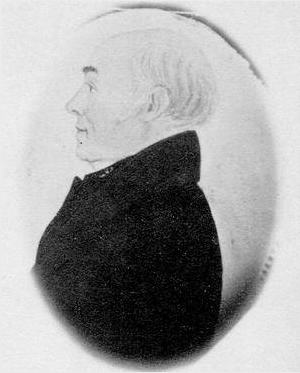|
James A.R. Kinney
James A.R. Kinney (February 25, 1879November 6, 1940) was a Canadian stenographer, African Nova Scotian community leader, and co-founder of the Colored Hockey League of the Maritimes. Early life James Alexander Ross Kinney was born on February 25, 1879, in Yarmouth, Nova Scotia. He was born to Charlotte Forrest and James E.Y. Kinney, a barber. His maternal grandmother arrived in Halifax from New York in 1789 with the Empire Loyalists, while his grandfather had been enslaved in Virginia. Career Kinney joined the Cornwallis Street Baptist Church (now New Horizons Baptist Church) as a teenager. He rose to prominence in both the African United Baptist Association of Nova Scotia (AUBA) and the African Nova Scotian community.Judith Fingard, “KINNEY, JAMES ALEXANDER ROSS,” in Dictionary of Canadian Biography, vol. 16, University of Toronto/Université Laval, 2003–, accessed June 4, 2024, http://www.biographi.ca/en/bio/kinney_james_alexander_ross_16E.html In 1895, in Halifax, ... [...More Info...] [...Related Items...] OR: [Wikipedia] [Google] [Baidu] |
Yarmouth, Nova Scotia
Yarmouth is a port town located on the Bay of Fundy in southwestern Nova Scotia, Canada. Yarmouth is the shire town of Yarmouth County, Nova Scotia, Yarmouth County and is the largest population centre in the region. History Originally inhabited by the Mi'kmaq, the region was known as "Keespongwitk" meaning "Lands End" due to its position at the tip of the Nova Scotia peninsula. European settlement The region was visited in 1604 by Samuel de Champlain, who named it "Cap-Fourchu", meaning "forked or cloven cape." The first Europeans to make a settlement on these shores were the Acadians, French Acadians. They set up a small fishing settlement known as "Tebouque" in the mid-1600s and by 1750 the population was 50 people. During the Seven Years' War the New England Planters settled at what is now the town of Yarmouth in 1759; the grantees were from Yarmouth, Massachusetts and they requested that Yarmouth be named after their former home. Yarmouth was founded on June 9, 1761, whe ... [...More Info...] [...Related Items...] OR: [Wikipedia] [Google] [Baidu] |
Black Nova Scotian
Black Nova Scotians (also known as African Nova Scotians, Afro-Nova Scotians, and Africadians) are Black Canadians whose ancestors primarily date back to the Colonial United States as slaves or freemen, later arriving in Nova Scotia, Canada during the 18th and early 19th centuries. As of the 2021 Census of Canada, 28,220 Black people live in Nova Scotia, most in Halifax. Since the 1950s, numerous Black Nova Scotians have migrated to Toronto for its larger range of opportunities.Confederation's Casualties: The "Maritimer" as a Problem in 1960s Toronto Acadiensis. Retrieved 2014-02-04. [...More Info...] [...Related Items...] OR: [Wikipedia] [Google] [Baidu] |
1879 Births
Events January * January 1 ** The Specie Resumption Act takes effect. The United States Note is valued the same as gold, for the first time since the American Civil War. ** Brahms' Violin Concerto is premiered in Leipzig with Joseph Joachim as soloist and the composer conducting. * January 11 – The Anglo-Zulu War begins. * January 22 – Anglo-Zulu War – Battle of Isandlwana: A force of 1,200 British soldiers is wiped out by over 20,000 Zulu warriors. * January 23 – Anglo-Zulu War – Battle of Rorke's Drift: Following the previous day's defeat, a smaller British force of 140 successfully repels an attack by 4,000 Zulus. February * February 3 – Mosley Street in Newcastle upon Tyne (England) becomes the world's first public highway to be lit by the electric incandescent light bulb invented by Joseph Swan. * February 8 – At a meeting of the Royal Canadian Institute, engineer and inventor Sandford Fleming first proposes the global ... [...More Info...] [...Related Items...] OR: [Wikipedia] [Google] [Baidu] |
Black Nova Scotians
Black Nova Scotians (also known as African Nova Scotians, Afro-Nova Scotians, and Africadians) are Black Canadians whose ancestors primarily date back to the Colonial history of the United States, Colonial United States as Slavery in the United States, slaves or Freeman (Colonial), freemen, later arriving in Nova Scotia, Canada during the 18th and early 19th centuries. As of the Canada 2021 Census, 2021 Census of Canada, 28,220 Black people live in Nova Scotia, most in Halifax, Nova Scotia, Halifax. Since the 1950s, numerous Black Nova Scotians have migrated to Toronto for its larger range of opportunities.Confederation's Casualties: The "Maritimer" as a Problem in 1960s Toronto Acadiensis. Retrieved 2014-02-04. [...More Info...] [...Related Items...] OR: [Wikipedia] [Google] [Baidu] |
Camp Hill Cemetery
Camp Hill Cemetery is a cemetery within Halifax, Nova Scotia, Canada. It is located on Camp Hill, adjacent to Robie Street. History The city's first cemetery, the Old Burying Ground was established in 1749, growing for nearly a century until Camp Hill succeeded it in 1844. Originally run by a private company, the cemetery is now owned and administered by the Halifax Regional Municipality. As a cemetery in the provincial capital, Camp Hill became the final resting place for many of Nova Scotia's elite. Officials allowed for the burial of Black Canadians in a segregated section of the cemetery. Initially, the resting places of African-Canadian veterans of World War I, unlike other white Canadian veterans, were marked with only flat white stones. This situation has been rectified by the federal department of Veterans Affairs. The Commonwealth War Graves Commission maintains the war graves of 10 service personnel of World War I and over 80 of World War II. [...More Info...] [...Related Items...] OR: [Wikipedia] [Google] [Baidu] |
Amherst, Nova Scotia
Amherst ( ) is a town in northwestern Nova Scotia, Canada, located at the northeast end of the Cumberland Basin (Canada), Cumberland Basin, an arm of the Bay of Fundy, and south of the Northumberland Strait. The town sits on a height of land at the eastern boundary of the Isthmus of Chignecto and Tantramar Marshes, east of the interprovincial border with New Brunswick and southeast of the city of Moncton. It is southwest of the New Brunswick abutment of the Confederation Bridge to Prince Edward Island at Cape Jourimain, New Brunswick, Cape Jourimain. History According to Dr. Graham P. Hennessey, "The Mi'kmaq people, Micmac name was ''Nemcheboogwek'' meaning 'going up rising ground', in reference to the higher land to the east of the Tantramar Marshes. The Acadians who settled here as early as 1672 called the village ''Les Planches''. The village was later renamed Amherst by Colonel Joseph Morse in honour of Jeffery Amherst, 1st Baron Amherst, Lord Amherst, the commander- ... [...More Info...] [...Related Items...] OR: [Wikipedia] [Google] [Baidu] |
Percy Seymour Martin
Percy Seymour Martin (October 18, 18901968) was a Canadian soldier who was the first Black Nova Scotian to receive the Military Medal. Early life Percival Seymour Martin was born on October 18, 1890, in Amherst, Cumberland County, Nova Scotia. His father, Robert Martin, was a truckman. Career Percy Martin was employed as an ironworker, a trade classified under a broader category of metal processing. He held a position at the Amherst Malleable Iron Foundry, where his brother Laurence led the department before the building became the Amherst Internment Camp in 1914. Military career World War I After joining the 106th Battalion in 1915, Martin was transferred to the Royal Canadian Regiment of the Canadian Army. On July 5, 1916, he enlisted in the Canadian Overseas Expeditionary Force in Truro, Nova Scotia. His unit embarked for Britain to fight in Europe on July 15, 1916. The troops first arrived in England aboard the S.S. Empress of Britain on July 25, 1916. As part of the 1 ... [...More Info...] [...Related Items...] OR: [Wikipedia] [Google] [Baidu] |
Henry Bauld
Henry Gibson Bauld (July 26, 1859 – February 3, 1948) was a merchant and political figure in Nova Scotia, Canada. He represented Halifax County in the Nova Scotia House of Assembly from 1916 to 1925 as a Liberal member. He was born in Halifax, the son of William Bauld and Emily Grey. In 1882, he married Margaret Edith Duncan. Bauld was a director of Halifax Fire Insurance Company and the Merchants' Bank of Halifax (now Royal Bank of Canada Royal Bank of Canada (RBC; ) is a Canadian multinational Financial institution, financial services company and the Big Five (banks), largest bank in Canada by market capitalization. The bank serves over 20 million clients and has more than ...). He was also president of the Nova Scotia Home for Colored Children in Preston. Bauld died in Halifax on Feburary 3, 1948 at the age of 88. References * ''A Directory of the Members of the Legislative Assembly of Nova Scotia, 1758-1958'', Public Archives of Nova Scotia (1958) ... [...More Info...] [...Related Items...] OR: [Wikipedia] [Google] [Baidu] |
Nova Scotia Home For Colored Children
A nova ( novae or novas) is a transient astronomical event that causes the sudden appearance of a bright, apparently "new" star (hence the name "nova", Latin for "new") that slowly fades over weeks or months. All observed novae involve white dwarfs in close binary systems, but causes of the dramatic appearance of a nova vary, depending on the circumstances of the two progenitor stars. The main sub-classes of novae are classical novae, recurrent novae (RNe), and dwarf novae. They are all considered to be cataclysmic variable stars. Classical nova eruptions are the most common type. This type is usually created in a close binary star system consisting of a white dwarf and either a main sequence, subgiant, or red giant star. If the orbital period of the system is a few days or less, the white dwarf is close enough to its companion star to draw accreted matter onto its surface, creating a dense but shallow atmosphere. This atmosphere, mostly consisting of hydrogen, is heated by th ... [...More Info...] [...Related Items...] OR: [Wikipedia] [Google] [Baidu] |
James Robinson Johnston
James Robinson Johnston (March 12, 1876 – March 3, 1915) was a Canadian lawyer and community leader. Early life and education Johnston was born in Halifax on March 12, 1876. He was the eldest of the five sons of William Johnston, a shoemaker, and Elizabeth Ann Thomas. His maternal grandparents were Reverend James Thomas, a white man from Wales who headed the African Baptist Association from 1861 to 1879, and Hannah Saunders, an African Nova Scotian woman. In the 1880s, Johnston was restricted from attending public school due to Nova Scotia's segregation laws. Under the system in place, black children attended separate schools which suffered from underfunding. At the age of six Johnston began attending school at the black Maynard School. In 1884, the segregation of schools was repealed and by 1887 he was attending the Albro Street School, making Johnston the first Black student to attend a White school. The following year he transferred to the Halifax Academy. Throughout hi ... [...More Info...] [...Related Items...] OR: [Wikipedia] [Google] [Baidu] |
Halifax, Nova Scotia
Halifax is the capital and most populous municipality of the Provinces and territories of Canada, Canadian province of Nova Scotia, and the most populous municipality in Atlantic Canada. As of 2024, it is estimated that the population of the Halifax Census Metropolitan Area, CMA was 530,167, with 348,634 people in its urban area. The regional municipality consists of four former municipalities that were Amalgamation (politics), amalgamated in 1996: History of Halifax (former city), Halifax, Dartmouth, Nova Scotia, Dartmouth, Bedford, Nova Scotia, Bedford, and Halifax County, Nova Scotia, Halifax County. Halifax is an economic centre of Atlantic Canada, home to a concentration of government offices and private companies. Major employers include the Canadian Armed Forces, Department of National Defence, Dalhousie University, Nova Scotia Health Authority, Saint Mary's University (Halifax), Saint Mary's University, the Halifax Shipyard, various levels of government, and the Port of ... [...More Info...] [...Related Items...] OR: [Wikipedia] [Google] [Baidu] |







